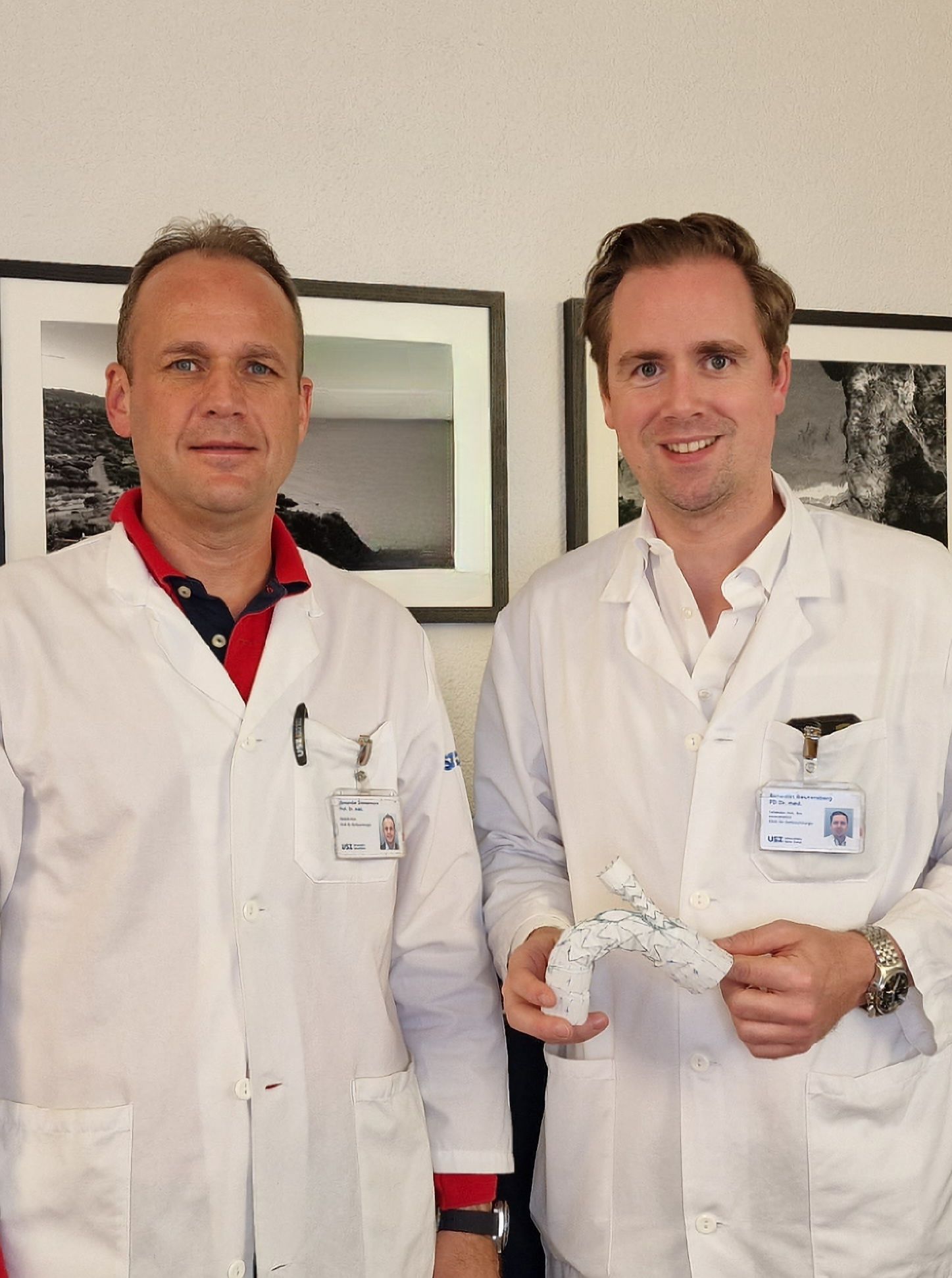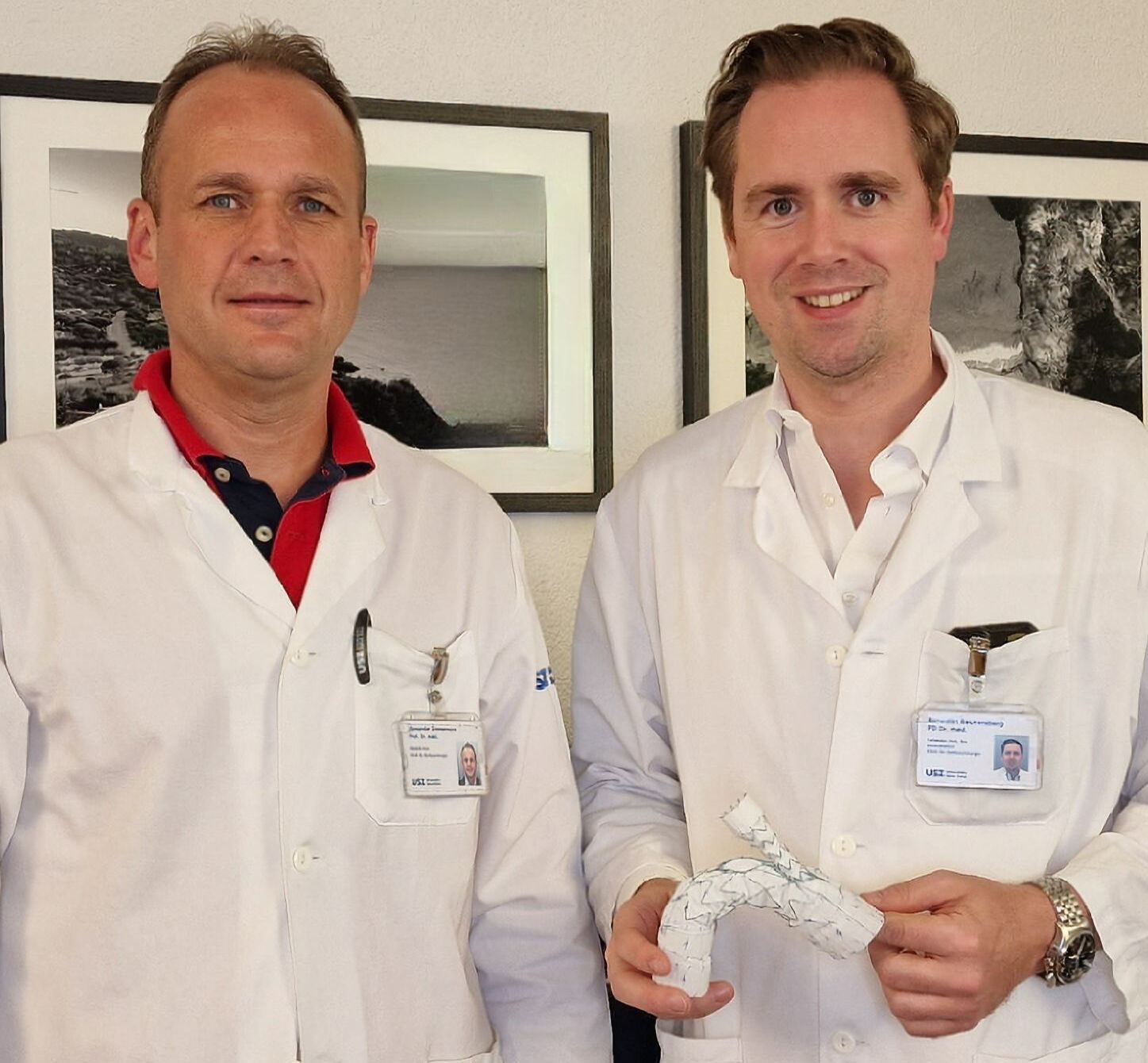For the first time in Switzerland, vascular surgeons of USZ inserted an aortic arch prosthesis entirely by minimally invasive procedure, without incisions, via an inguinal artery and accesses in the arms. The severely ill patient would not have survived the usual operation. Now she is doing well again.
In cases of dangerous dilatation of the aorta (main artery) or rupture of the aorta, the damaged section is reinforced with a combined stent-prosthesis or replaced with an conventional aortic prosthesis. For some time now, these procedures can be performed endovascularly, i.e. using catheter technology via access through an inguinal artery. However, if the upper end of the aorta, the aortic arch, also needs to be replaced, this requires major surgery because the prosthesis has to be connected to the vascular passages for the head and arms that run out of there. For this, the chest must be opened and, in addition, the cardiovascular system must be taken over by a heart-lung machine during the insertion of the prosthesis. Even with the minimally invasive method, part of the vessels had to be replaced by open surgery until recently.
For the first time in Switzerland, a team led by Alexander Zimmermann, Director of the Department of Vascular Surgery at the USZ, has now performed this procedure on a patient completely without incisions.
Too ill for the usual surgery
The critically ill 69-year-old patient required an aortic arch prosthesis, but she also suffers from advanced limited lung function and heart problems. Her chest had already been opened once for a previous heart operation. Since aortic operations are always discussed with the cardiac surgery team led by Omer Dzemali, Director of the Department of Cardiac Surgery at the USZ, specialists from the two disciplines also consulted in this case. Cardiac surgeons considered conventional surgery as too great a strain for the patient. It was unlikely that she would have survived the procedure. “At the same time, there was a permanent increase in the risk of her aorta rupturing, which would have resulted in the patient’s death,” says Alexander Zimmermann, describing the initial situation. The only chance for the patient was therefore to have the procedure performed entirely by catheter technique via vascular accesses in order to keep the patient’s strain as low as possible. The prerequisite for this was the use of a new type of prosthesis that makes aortic arch replacement possible completely without incisions. Cardiac and vascular surgeons assessed the operation as risky but possible, the patient decided to dare to undergo the procedure this way.
After only three days, the patient was able to go home
In a two-and-a-half-hour operation, the patient’s aortic arch was replaced. The entire operation was performed via access to an inguinal artery and a few highly precise access points in the arms. Thanks to this procedure, the duration of the operation and assisted respiration for the patient could be kept short: the strain on the lungs and heart was thus kept as low as possible. “It all worked out as well as anyone could have hoped,” says Zimmermann. “The well-rehearsed and perfect collaboration of the two teams from vascular and cardiac surgery contributed significantly to this.” The patient recovered so quickly from the operation that she was able to leave the university hospital just three days after the operation.
One of the first operations worldwide
The USZ patient was one of the first worldwide to undergo such an operation. Because the manufacturer places high demands on the surgical team, the prosthesis is used only in a few, highly specialized centers, in Switzerland only at the USZ. “We are of course proud to be part of it and have access to the latest technologies and products,” says Zimmermann. “Above all, however, we are pleased that this has enabled us to offer the patient such a gentle operation and also to help other patients who have been denied all other options.”



